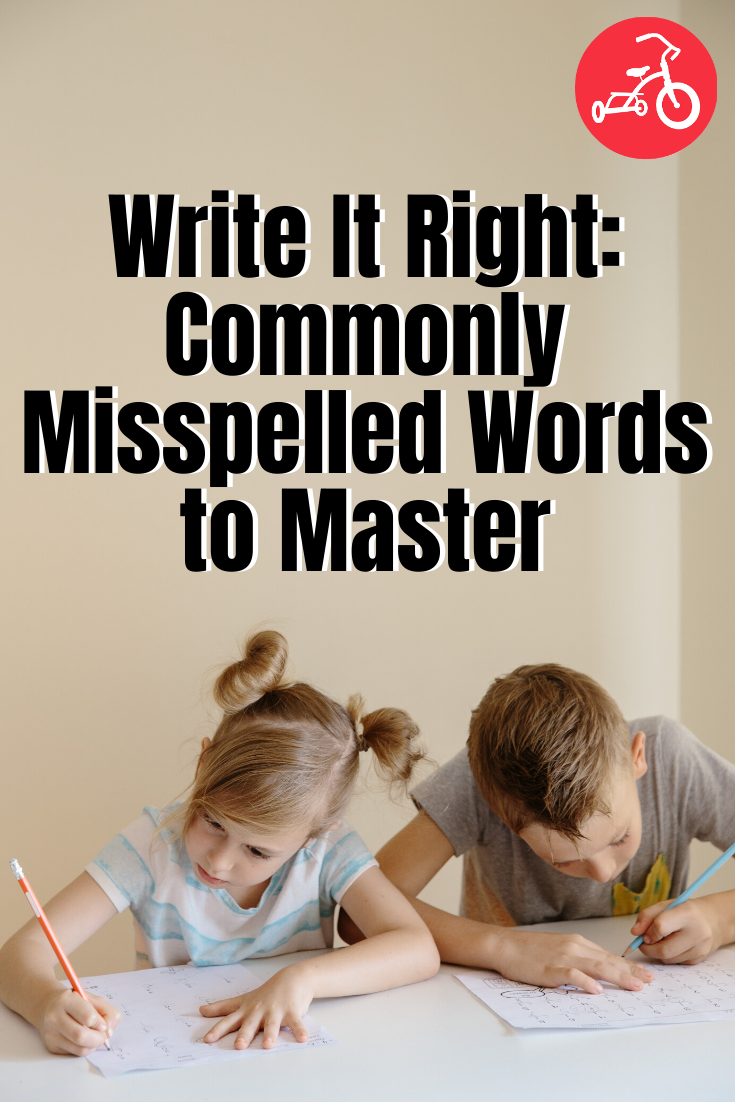So you thought that once you nailed the whole reading and writing thing you were in the clear, huh? Unfortunately, there are a host of confusing words that trip up even the most sentence-savvy adults. That’s why it’s best to learn them early (and often) to avoid forming bad grammar habits that are hard to unstick. Read on for a few of the most commonly confused words and helpful tips on how to remember to use them right (not write or rite), alright?

To vs. Too vs. Two
TO: preposition, toward
e.g. We are going to Disneyland!
TOO: adverb, also, or excessively
e.g. The kids ate too many doughnuts. OR We are going to the party, too.
TWO: noun and/or adjective; a number
e.g. Only two students did not turn in the assignment.
Their vs. There vs. They’re
THEIR: possessive form of they. (This word is extra tricky because it breaks the “i before e except after c” rule!)
e.g. Their house is at the end of the block.
THERE: indicates location (hint: think of “here and there”)
e.g. I left my bicycle over there.
THEY’RE: contraction for “they are”
e.g. They’re playing tennis today.
Principal vs. Principle
PRINCIPAL: adjective, most important; noun, a person who has authority
e.g. The principal ingredient in chocolate chip cookies is chocolate chips.
e.g. The principal of the school does the announcements each morning.
PRINCIPLE: noun, a general or fundamental truth
e.g. In class they had to learn the principle of gravity.
Complement vs. Compliment
COMPLEMENT: noun, something that completes; verb, to complete
e.g. A tall glass of milk complements a peanut-butter-and-jelly sandwich.
COMPLIMENT: noun, praise; verb, to praise
e.g. The teacher complimented Rowan on his art project.
A lot vs. Alot vs. Allot
A LOT: (two words) many
e.g. I have a lot of boogers, mom.
ALOT (one word): Not a real word, so don’t use it!
e.g. No example! This is not a word!
ALLOT: verb, to divide or distribute or portion out.
e.g. Please allot one cracker per child.
Its vs. It’s
ITS: possessive pronoun; of or belonging to it
e.g. The baby will scream as soon as its mother walks out of the room.
IT’S: contraction for “it is”
e.g. It’s a beautiful day in the neighborhood.
Feet vs. Feat
FEET: noun, the plural of foot meaning a measurement equalling 12 inches; also, a part of the human body that you stand on
e.g. How many feet have you grown since you were five-years-old? and: Look at those perfect little feet!
FEAT: noun, an impressive act.
e.g. Getting the kids out the door in the morning is no small feat.
Alley vs. Ally
ALLEY: noun, a narrow back street
e.g. Pull the car around through the alley to load up the stroller.
ALLY: noun, a friend; also as a verb; to ally or join forces
e.g. The PTA is meant to be a parent’s in-school ally.
Bar vs. Barre
BAR: noun, a place where you get cocktails
e.g. It’s mom’s night out at the finest bar in town!
BARRE: noun; a handrail at hip height used to train in ballet, also adjective; describing a method of exercise that incorporates ballet strength and muscle training and is reputed to give you a great butt
e.g. Can we please hit the bar after tonight’s barre class?
Are there other words that often trip you up? Tell us your tricks to remember the right usage in the comments below!
–Erin Feher & Amber Guetebier












